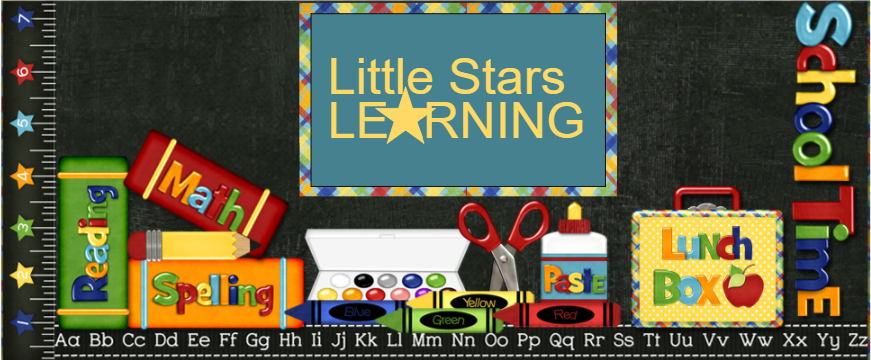These can look VERY amazing, link at the bottom, but I like these process art ones by my 2-year-old students even better.
A little Rainbow Fish theme today.
Don't let the length of the post and the number of instructions intimidate you. The basic fish goes together in just a few minutes once you know what you're doing. I had to figure out a bunch of stuff, so I wanted to make sure my instructions were detailed.
First off, you have to pick the right bottle.
ONLY the one on the left will work.
The shaft of the bottle must be smooth with no contour.
Lesson learned the hard way trying make one of the other ones work. It didn't. Ever.
Using a utility or snap blade knife, cut off the bottom just at the top of the ridges.
Add the bottom to your painting supplies for flower or sand dollar stamping or use to freeze large ice cubes in the shape of flowers for a punch bowl. I do both. With the same ones. Depending on the need at the time.
Flatten and staple. Important...press down firmly and ensure that the staples staple properly.
A double stapling in the middle is best and more secure, since you will be popping the plastic in and out around them.
Cut top and bottom at an angle to create the fins.
[If you are not the visual/creative type, I've created a template for this part.]
Cut the bottom curvy for a tail.
Cut a curve up to toward the staples, staying back about 1 inch to finish the tail, and from there curve down to the top edge of the fin to create the body.
From the top it looks like this.
Pop the plastic back out to 3D.
Hold it up and see about where it centers for hanging level. Using a hole punch, add holes to either side of the fish for hanging. It's much easier to do at this stage than later.
For the scales, I found it easiest to use crepe paper streamer. I flattened a TP tube, folded it in half, and used it to wrap the crepe paper around.
It was very easy to just pull it off when I had as much on there as I wanted.
Snip both folded edges...
and round off one end.
Make sure to supply just a few scales of the same size and shape made out of FOIL for a Rainbow Fish effect.
The children got to pick the colors of the scales we used. I created them and placed them in the center of the table for them to freely pick from.
I gave them some watered down school glue in cups and they picked a big brush and went at placing the scales on their "fish" decoupage style.
These were 2-3 year olds, so the nicely layered, overlapping scales that an older child might achieve were not apparent. I was surprised at their diligence in getting their entire fish covered. It was a lot of work for little ones, and I didn't have one pre-made to encourage them with. Once covered, I re-defined the edges with scissors.
And re-opened the hanging holes.
To make the eyes, we traced around a bottle cap, cut it out, teacher-assisted as needed, and glued it on. The children then got to pick circles out of the foam shapes to add on top.
The mouth is created from condiment cups. We snagged these during a BK run over the weekend. Arby's, Wendy's and other restaurants have them, as well as hospitals, doctor's and dentist offices, usually.
I found it impossible to cut the mouth off the bottle using either scissors or my snap knife. I ended up using my serrated bread knife and cutting just at the base of the top, a little over a 1/2 inch below the bottom ridge of the top.
I found that I needed to turn it and do each quarter edge separately in order to keep it even across the top. Once I get the top off, I can refine the hole as needed with scissors to make it big enough for the condiment cup to fit into.
Don't worry about the edges of the hole being perfect. The condiment cup has a lip that covers up any imperfections, and it will form to the shape you create, so even a perfect circle isn't necessary. Just try not to get it too big.
Now that I know what I'm doing, I'm doing this step in the first stages when I initially cut and form the fish.
The children chose the color of paint and painted the inside and outer rim of their cups.
I didn't GLUE the cups into the mouth openings. These children are young enough that they routinely flatten their fish, and I have to get in there and pop the plastic out. It's easier to do if I can get the cup out and go in through the mouth. If they lose their mouths, those are easily replaced.
We added them to our under the sea scene in our classroom.
This is an original idea from Filth Wizardry that I found via Pinterest. I felt that their instructions left much to be desired, and think my stapling technique is superior to their taping technique for overall stability and design, but the fish she created herself are AMAZING! Check them out to see just how beautiful these creations can be. A very unique, creative idea that I can't thank Filth Wizardry enough for sharing!
Tags: pop, soda, bottle, fish, ocean, sea, theme, unit, preschool, kindergarten, daycare, childcare, child, care, cut, paste, glue, mod podge, decoupage, 3D, 2-liter, scene, decoration, party




































































